Renewable Carbonaceous Materials from Biomass in Catalytic Processes: A Review
Abstract
1. Introduction
2. Renewable Carbonaceous Materials from Biomass Production and Its Properties
2.1. Pyrolysis and Torrefaction
2.2. Hydrothermal Carbonization
2.3. Overview of Applications for Carbonaceous Materials
3. Applications of Carbonaceous Materials in Catalytic Processes
3.1. Biofuel Production
3.2. Tar Removal
3.3. Chemical Production
3.4. Photocatalytic Systems
3.5. Electrocatalysis
3.6. Microbial Fuel Cell Electrodes
3.7. Pollutant Removal
4. Conclusions
Funding
Institutional Review Board Statement
Informed Consent Statement
Data Availability Statement
Conflicts of Interest
References
- López-Salas, N.; Antonietti, M. Carbonaceous Materials: The Beauty of Simplicity. Bull. Chem. Soc. Jpn. 2021, 94, 2822–2828. [Google Scholar] [CrossRef]
- González-Arias, J.; Sánchez, M.E.; Cara-Jiménez, J. Profitability Analysis of Thermochemical Processes for Biomass-Waste Valorization: A Comparison of Dry vs Wet Treatments. Sci. Total Environ. 2022, 811, 152240. [Google Scholar] [CrossRef]
- González-Arias, J.; Carnicero, A.; Sánchez, M.E.; Martínez, E.J.; López, R.; Cara-Jiménez, J. Management of Off-Specification Compost by Using Co-Hydrothermal Carbonization with Olive Tree Pruning. Assessing Energy Potential of Hydrochar. Waste Manag. 2021, 124, 224–234. [Google Scholar] [CrossRef]
- Xiong, X.; Yu, I.K.M.; Cao, L.; Tsang, D.C.W.; Zhang, S.; Ok, Y.S. A Review of Biochar-Based Catalysts for Chemical Synthesis, Biofuel Production, and Pollution Control. Bioresour. Technol. 2017, 246, 254–270. [Google Scholar] [CrossRef]
- Anto, S.; Sudhakar, M.P.; Shan Ahamed, T.; Samuel, M.S.; Mathimani, T.; Brindhadevi, K.; Pugazhendhi, A. Activation Strategies for Biochar to Use as an Efficient Catalyst in Various Applications. Fuel 2021, 285, 119205. [Google Scholar] [CrossRef]
- Yao, D.; Hu, Q.; Wang, D.; Yang, H.; Wu, C.; Wang, X.; Chen, H. Hydrogen Production from Biomass Gasification Using Biochar as a Catalyst/Support. Bioresour. Technol. 2016, 216, 159–164. [Google Scholar] [CrossRef]
- Chen, W.; Fang, Y.; Li, K.; Chen, Z.; Xia, M.; Gong, M.; Chen, Y.; Yang, H.; Tu, X.; Chen, H. Bamboo Wastes Catalytic Pyrolysis with N-Doped Biochar Catalyst for Phenols Products. Appl. Energy 2020, 260, 114242. [Google Scholar] [CrossRef]
- Dehkhoda, A.M.; West, A.H.; Ellis, N. Biochar Based Solid Acid Catalyst for Biodiesel Production. Appl. Catal. A Gen. 2010, 382, 197–204. [Google Scholar] [CrossRef]
- Vassilev, S.V.; Baxter, D.; Vassileva, C.G. An Overview of the Behaviour of Biomass during Combustion: Part I. Phase-Mineral Transformations of Organic and Inorganic Matter. Fuel 2013, 112, 391–449. [Google Scholar] [CrossRef]
- Suhas; Carrott, P.J.M.; Ribeiro Carrott, M.M.L. Lignin—From Natural Adsorbent to Activated Carbon: A Review. Bioresour. Technol. 2007, 98, 2301–2312. [Google Scholar] [CrossRef]
- Wang, Z.; Shen, D.; Wu, C.; Gu, S. State-of-the-Art on the Production and Application of Carbon Nanomaterials from Biomass. Green Chem. 2018, 20, 5031–5057. [Google Scholar] [CrossRef]
- Kim, D.; Yoshikawa, K.; Park, K.Y. Characteristics of Biochar Obtained by Hydrothermal Carbonization of Cellulose for Renewable Energy. Energies 2015, 8, 12412. [Google Scholar] [CrossRef]
- Dhyani, V.; Bhaskar, T. A Comprehensive Review on the Pyrolysis of Lignocellulosic Biomass. Renew. Energy 2018, 129, 695–716. [Google Scholar] [CrossRef]
- Lan, G.; Yang, J.; Ye, R.P.; Boyjoo, Y.; Liang, J.; Liu, X.; Li, Y.; Liu, J.; Qian, K. Sustainable Carbon Materials toward Emerging Applications. Small Methods 2021, 5, 2001250. [Google Scholar] [CrossRef]
- González-Arias, J.; Gómez, X.; González-Castaño, M.; Sánchez, M.E.; Rosas, J.G.; Cara-Jiménez, J. Insights into the Product Quality and Energy Requirements for Solid Biofuel Production: A Comparison of Hydrothermal Carbonization, Pyrolysis and Torrefaction of Olive Tree Pruning. Energy 2022, 238, 122022. [Google Scholar] [CrossRef]
- Chen, W.H.; Lin, B.J.; Lin, Y.Y.; Chu, Y.S.; Ubando, A.T.; Show, P.L.; Ong, H.C.; Chang, J.S.; Ho, S.H.; Culaba, A.B.; et al. Progress in Biomass Torrefaction: Principles, Applications and Challenges. Prog. Energy Combust. Sci. 2021, 82, 100887. [Google Scholar] [CrossRef]
- van der Stelt, M.J.C.; Gerhauser, H.; Kiel, J.H.A.; Ptasinski, K.J. Biomass Upgrading by Torrefaction for the Production of Biofuels: A Review. Biomass Bioenergy 2011, 35, 3748–3762. [Google Scholar] [CrossRef]
- Bridgwater, A.V. Review of Fast Pyrolysis of Biomass and Product Upgrading. Biomass Bioenergy 2012, 38, 68–94. [Google Scholar] [CrossRef]
- Wang, T.; Liu, H.; Duan, C.; Xu, R.; Zhang, Z.; She, D.; Zheng, J. The Eco-Friendly Biochar and Valuable Bio-Oil from Caragana Korshinskii: Pyrolysis Preparation, Characterization, and Adsorption Applications. Materials 2020, 13, 3391. [Google Scholar] [CrossRef]
- Zhang, D.; Wang, T.; Zhi, J.; Zheng, Q.; Chen, Q.; Zhang, C.; Li, Y. Utilization of Jujube Biomass to Prepare Biochar by Pyrolysis and Activation: Characterization, Adsorption Characteristics, and Mechanisms for Nitrogen. Materials 2020, 13, 5594. [Google Scholar] [CrossRef] [PubMed]
- Kazimierski, P.; Januszewicz, K.; Godlewski, W.; Fijuk, A.; Suchocki, T.; Chaja, P.; Barczak, B.; Kardaś, D. The Course and the Effects of Agricultural Biomass Pyrolysis in the Production of High-Calorific Biochar. Materials 2022, 15, 1038. [Google Scholar] [CrossRef] [PubMed]
- Wang, G.; Dai, Y.; Yang, H.; Xiong, Q.; Wang, K.; Zhou, J.; Li, Y.; Wang, S. A Review of Recent Advances in Biomass Pyrolysis. Energy Fuels 2020, 34, 15557–15578. [Google Scholar] [CrossRef]
- Lv, D.; Xu, M.; Liu, X.; Zhan, Z.; Li, Z.; Yao, H. Effect of Cellulose, Lignin, Alkali and Alkaline Earth Metallic Species on Biomass Pyrolysis and Gasification. Fuel Process. Technol. 2010, 91, 903–909. [Google Scholar] [CrossRef]
- Collard, F.X.; Blin, J. A Review on Pyrolysis of Biomass Constituents: Mechanisms and Composition of the Products Obtained from the Conversion of Cellulose, Hemicelluloses and Lignin. Renew. Sustain. Energy Rev. 2014, 38, 594–608. [Google Scholar] [CrossRef]
- Lee, Y.; Park, J.; Ryu, C.; Gang, K.S.; Yang, W.; Park, Y.K.; Jung, J.; Hyun, S. Comparison of Biochar Properties from Biomass Residues Produced by Slow Pyrolysis at 500 °C. Bioresour. Technol. 2013, 148, 196–201. [Google Scholar] [CrossRef]
- Akhtar, J.; Saidina Amin, N. A Review on Operating Parameters for Optimum Liquid Oil Yield in Biomass Pyrolysis. Renew. Sustain. Energy Rev. 2012, 16, 5101–5109. [Google Scholar] [CrossRef]
- Mani, T.; Murugan, P.; Abedi, J.; Mahinpey, N. Pyrolysis of Wheat Straw in a Thermogravimetric Analyzer: Effect of Particle Size and Heating Rate on Devolatilization and Estimation of Global Kinetics. Chem. Eng. Res. Des. 2010, 88, 952–958. [Google Scholar] [CrossRef]
- Zhao, B.; O’Connor, D.; Zhang, J.; Peng, T.; Shen, Z.; Tsang, D.C.W.; Hou, D. Effect of Pyrolysis Temperature, Heating Rate, and Residence Time on Rapeseed Stem Derived Biochar. J. Clean. Prod. 2018, 174, 977–987. [Google Scholar] [CrossRef]
- Kim, K.H.; Eom, I.Y.; Lee, S.M.; Choi, D.; Yeo, H.; Choi, I.G.; Choi, J.W. Investigation of Physicochemical Properties of Biooils Produced from Yellow Poplar Wood (Liriodendron tulipifera) at Various Temperatures and Residence Times. J. Anal. Appl. Pyrolysis 2011, 92, 2–9. [Google Scholar] [CrossRef]
- Yang, D.P.; Li, Z.; Liu, M.; Zhang, X.; Chen, Y.; Xue, H.; Ye, E.; Luque, R. Biomass-Derived Carbonaceous Materials: Recent Progress in Synthetic Approaches, Advantages, and Applications. ACS Sustain. Chem. Eng. 2019, 7, 4564–4585. [Google Scholar] [CrossRef]
- González-Arias, J.; Baena-Moreno, F.M.; Sánchez, M.E.; Cara-Jiménez, J. Optimizing Hydrothermal Carbonization of Olive Tree Pruning: A Techno-Economic Analysis Based on Experimental Results. Sci. Total Environ. 2021, 784, 147169. [Google Scholar] [CrossRef]
- González-Arias, J.; Sánchez, M.E.; Cara-Jiménez, J.; Baena-Moreno, F.M.; Zhang, Z. Hydrothermal Carbonization of Biomass and Waste: A Review. Environ. Chem. Lett. 2022, 20, 211–221. [Google Scholar] [CrossRef]
- Nizamuddin, S.; Baloch, H.A.; Griffin, G.J.; Mubarak, N.M.; Bhutto, A.W.; Abro, R.; Mazari, S.A.; Ali, B.S. An Overview of Effect of Process Parameters on Hydrothermal Carbonization of Biomass. Renew. Sustain. Energy Rev. 2017, 73, 1289–1299. [Google Scholar] [CrossRef]
- González-Arias, J.; Sánchez, M.E.; Martínez, E.J.; Covalski, C.; Alonso-Simón, A.; González, R.; Cara-Jiménez, J. Hydrothermal Carbonization of Olive Tree Pruning as a Sustainable Way for Improving Biomass Energy Potential: Effect of Reaction Parameters on Fuel Properties. Processes 2020, 8, 1201. [Google Scholar] [CrossRef]
- Nakason, K.; Panyapinyopol, B.; Kanokkantapong, V.; Viriya-empikul, N.; Kraithong, W.; Pavasant, P. Hydrothermal Carbonization of Unwanted Biomass Materials: Effect of Process Temperature and Retention Time on Hydrochar and Liquid Fraction. J. Energy Inst. 2018, 91, 786–796. [Google Scholar] [CrossRef]
- Liu, F.; Yu, R.; Guo, M. Hydrothermal Carbonization of Forestry Residues: Influence of Reaction Temperature on Holocellulose-Derived Hydrochar Properties. J. Mater. Sci. 2017, 52, 1736–1746. [Google Scholar] [CrossRef]
- Lu, X.; Pellechia, P.J.; Flora, J.R.V.; Berge, N.D. Influence of Reaction Time and Temperature on Product Formation and Characteristics Associated with the Hydrothermal Carbonization of Cellulose. Bioresour. Technol. 2013, 138, 180–190. [Google Scholar] [CrossRef]
- López, R.; González-Arias, J.; Pereira, F.J.; Fernández, C.; Cara-Jiménez, J. A Techno-Economic Study of HTC Processes Coupled with Power Facilities and Oxy-Combustion Systems. Energy 2021, 219, 119651. [Google Scholar] [CrossRef]
- Wang, J.; Nie, P.; Ding, B.; Dong, S.; Hao, X.; Dou, H.; Zhang, X. Biomass Derived Carbon for Energy Storage Devices. J. Mater. Chem. A Mater. 2017, 5, 2411–2428. [Google Scholar] [CrossRef]
- Ravi, S.; Vadukumpully, S. Sustainable Carbon Nanomaterials: Recent Advances and Its Applications in Energy and Environmental Remediation. J. Environ. Chem. Eng. 2016, 4, 835–856. [Google Scholar] [CrossRef]
- Sun, Z.; Fang, S.; Hu, Y.H. 3D Graphene Materials: From Understanding to Design and Synthesis Control. Chem. Rev. 2020, 120, 10336–10453. [Google Scholar] [CrossRef]
- Haile, A.; Gelebo, G.G.; Tesfaye, T.; Mengie, W.; Mebrate, M.A.; Abuhay, A.; Limeneh, D.Y. Pulp and Paper Mill Wastes: Utilizations and Prospects for High Value-Added Biomaterials. Bioresour. Bioprocess. 2021, 8, 35. [Google Scholar] [CrossRef]
- Mohamad Nor, N.; Lau, L.C.; Lee, K.T.; Mohamed, A.R. Synthesis of Activated Carbon from Lignocellulosic Biomass and Its Applications in Air Pollution Control—A Review. J. Environ. Chem. Eng. 2013, 1, 658–666. [Google Scholar] [CrossRef]
- Zhang, B.; Jiang, Y.; Balasubramanian, R. Synthesis, Formation Mechanisms and Applications of Biomass-Derived Carbonaceous Materials: A Critical Review. J. Mater. Chem. A Mater. 2021, 9, 24759–24802. [Google Scholar] [CrossRef]
- Barin, G.B.; De Fátima Gimenez, I.; Da Costa, L.P.; Filho, A.G.S.; Barreto, L.S. Influence of Hydrothermal Carbonization on Formation of Curved Graphite Structures Obtained from a Lignocellulosic Precursor. Carbon 2014, 78, 609–612. [Google Scholar] [CrossRef]
- Shams, S.S.; Zhang, L.S.; Hu, R.; Zhang, R.; Zhu, J. Synthesis of Graphene from Biomass: A Green Chemistry Approach. Mater. Lett. 2015, 161, 476–479. [Google Scholar] [CrossRef]
- Liu, B.; Liu, Y.; Chen, H.; Yang, M.; Li, H. Oxygen and Nitrogen Co-Doped Porous Carbon Nanosheets Derived from Perilla frutescens for High Volumetric Performance Supercapacitors. J. Power Sources 2017, 341, 309–317. [Google Scholar] [CrossRef]
- Wang, L.; Zhang, L.C.; Cheng, J.X.; Ding, C.X.; Chen, C.H. Watermelon Used as a Novel Carbon Source to Improve the Rate Performance of Iron Oxide Electrodes for Lithium Ion Batteries. Electrochim. Acta 2013, 102, 306–311. [Google Scholar] [CrossRef]
- Sevilla, M.; Fuertes, A.B. Graphitic Carbon Nanostructures from Cellulose. Chem. Phys. Lett. 2010, 490, 63–68. [Google Scholar] [CrossRef]
- Qu, J.; Luo, C.; Yuan, X. Synthesis of Hybrid Carbon Nanotubes Using Brassica juncea L. Application to Photodegradation of Bisphenol A. Environ. Sci. Pollut. Res. 2013, 20, 3688–3695. [Google Scholar] [CrossRef]
- Liu, W.J.; Tian, K.; He, Y.R.; Jiang, H.; Yu, H.Q. High-Yield Harvest of Nanofibers/Mesoporous Carbon Composite by Pyrolysis of Waste Biomass and Its Application for High Durability Electrochemical Energy Storage. Environ. Sci. Technol. 2014, 48, 13951–13959. [Google Scholar] [CrossRef]
- Sun, Z.; Zheng, M.; Hu, H.; Dong, H.; Liang, Y.; Xiao, Y.; Lei, B.; Liu, Y. From Biomass Wastes to Vertically Aligned Graphene Nanosheet Arrays: A Catalyst-Free Synthetic Strategy towards High-Quality Graphene for Electrochemical Energy Storage. Chem. Eng. J. 2018, 336, 550–561. [Google Scholar] [CrossRef]
- Rhee, I.; Kim, Y.A.; Shin, G.O.; Kim, J.H.; Muramatsu, H. Compressive Strength Sensitivity of Cement Mortar Using Rice Husk-Derived Graphene with a High Specific Surface Area. Constr. Build. Mater. 2015, 96, 189–197. [Google Scholar] [CrossRef]
- Onishchenko, D.V.; Reva, V.P.; Kuryavyi, V.G. Hydrogen Storage in Multilayer Carbon Nanotubes. Coke Chem. 2013, 56, 182–185. [Google Scholar] [CrossRef]
- Onishchenko, D.V.; Reva, V.P. Sorption Properties of Multilayer Carbon Nanotubes Produced from Cotton. Coke Chem. 2013, 56, 262–265. [Google Scholar] [CrossRef]
- Niu, Q.; Gao, K.; Tang, Q.; Wang, L.; Han, L.; Fang, H.; Zhang, Y.; Wang, S.; Wang, L. Large-Size Graphene-like Porous Carbon Nanosheets with Controllable N-Doped Surface Derived from Sugarcane Bagasse Pith/Chitosan for High Performance Supercapacitors. Carbon 2017, 123, 290–298. [Google Scholar] [CrossRef]
- Fathy, N.A. Carbon Nanotubes Synthesis Using Carbonization of Pretreated Rice Straw through Chemical Vapor Deposition of Camphor. RSC Adv. 2017, 7, 28535–28541. [Google Scholar] [CrossRef]
- Thompson, E.; Danks, A.E.; Bourgeois, L.; Schnepp, Z. Iron-Catalyzed Graphitization of Biomass. Green Chem. 2015, 17, 551–556. [Google Scholar] [CrossRef]
- Debalina, B.; Reddy, R.B.; Vinu, R. Production of Carbon Nanostructures in Biochar, Bio-Oil and Gases from Bagasse via Microwave Assisted Pyrolysis Using Fe and Co as Susceptors. J. Anal. Appl. Pyrolysis 2017, 124, 310–318. [Google Scholar] [CrossRef]
- Chen, F.; Yang, J.; Bai, T.; Long, B.; Zhou, X. Facile Synthesis of Few-Layer Graphene from Biomass Waste and Its Application in Lithium Ion Batteries. J. Electroanal. Chem. 2016, 768, 18–26. [Google Scholar] [CrossRef]
- Sun, L.; Tian, C.; Li, M.; Meng, X.; Wang, L.; Wang, R.; Yin, J.; Fu, H. From Coconut Shell to Porous Graphene-like Nanosheets for High-Power Supercapacitors. J. Mater. Chem. A Mater. 2013, 1, 6462–6470. [Google Scholar] [CrossRef]
- Arenas, C.; Sotres, A.; Alonso, R.M.; González-Arias, J.; Morán, A.; Gómez, X. Pyrolysed Almond Shells Used as Electrodes in Microbial Electrolysis Cell. Biomass Convers. Biorefinery 2022, 12, 313–321. [Google Scholar] [CrossRef]
- Yuan, G.; Li, H.; Hu, H.; Xie, Y.; Xiao, Y.; Dong, H.; Liang, Y.; Liu, Y.; Zheng, M. Microstructure Engineering towards Porous Carbon Materials Derived from One Biowaste Precursor for Multiple Energy Storage Applications. Electrochim. Acta 2019, 326, 134974. [Google Scholar] [CrossRef]
- Xiao, X.; Chen, B.; Zhu, L.; Schnoor, J.L. Sugar Cane-Converted Graphene-like Material for the Superhigh Adsorption of Organic Pollutants from Water via Coassembly Mechanisms. Environ. Sci. Technol. 2017, 51, 12644–12652. [Google Scholar] [CrossRef]
- Wang, A.; Zheng, Z.; Li, R.; Hu, D.; Lu, Y.; Luo, H.; Yan, K. Biomass-Derived Porous Carbon Highly Efficient for Removal of Pb(II) and Cd(II). Green Energy Environ. 2019, 4, 414–423. [Google Scholar] [CrossRef]
- Le Saché, E.; Johnson, S.; Pastor-Pérez, L.; Horri, B.A.; Reina, T.R. Biogas Upgrading via Dry Reforming over a Ni-Sn/CeO2-Al2O3 Catalyst: Influence of the Biogas Source. Energies 2019, 12, 1007. [Google Scholar] [CrossRef]
- İnan, B.; Koçer, A.T.; Özçimen, D.B. Valorization of Lignocellulosic Wastes for Low-Cost and Sustainable Algal Biodiesel Production Using Biochar-Based Solid Acid Catalyst. J. Anal. Appl. Pyrolysis 2023, 173, 106095. [Google Scholar] [CrossRef]
- Johnson, B.J.; Melde, B.J.; Moore, M.H.; Malanoski, A.P.; Taft, J.R. Improving Sorbents for Glycerol Capture in Biodiesel Refinement. Materials 2017, 10, 682. [Google Scholar] [CrossRef]
- Orege, J.I.; Oderinde, O.; Kifle, G.A.; Ibikunle, A.A.; Raheem, S.A.; Ejeromedoghene, O.; Okeke, E.S.; Olukowi, O.M.; Orege, O.B.; Fagbohun, E.O.; et al. Recent Advances in Heterogeneous Catalysis for Green Biodiesel Production by Transesterification. Energy Convers. Manag. 2022, 258, 115406. [Google Scholar] [CrossRef]
- Lee, D.-W.; Park, Y.-M.; Lee, K.-Y. Heterogeneous Base Catalysts for Transesterification in Biodiesel Synthesis. Catal. Surv. Asia 2009, 13, 63–77. [Google Scholar] [CrossRef]
- Azman, N.S.; Khairuddin, N.; Tengku Azmi, T.S.M.; Seenivasagam, S.; Hassan, M.A. Application of Biochar from Woodchip as Catalyst Support for Biodiesel Production. Catalysts 2023, 13, 489. [Google Scholar] [CrossRef]
- di Bitonto, L.; Reynel-Ávila, H.E.; Mendoza-Castillo, D.I.; Bonilla-Petriciolet, A.; Durán-Valle, C.J.; Pastore, C. Synthesis and Characterization of Nanostructured Calcium Oxides Supported onto Biochar and Their Application as Catalysts for Biodiesel Production. Renew. Energy 2020, 160, 52–66. [Google Scholar] [CrossRef]
- Wang, Y.; Li, O.D.; Zhao, O.D.; Fan, Y.; Bi, J.; Shan, R.; Yang, J.; Luo, B.; Yuan, H.; Ling, X.; et al. Calcium-Loaded Municipal Sludge-Biochar as an Efficient and Stable Catalyst for Biodiesel Production from Vegetable Oil. ACS Omega 2020, 5, 17471–17478. [Google Scholar] [CrossRef] [PubMed]
- Daimary, N.; Eldiehy, K.S.H.; Boruah, P.; Deka, D.; Bora, U.; Kakati, B.K. Potato Peels as a Sustainable Source for Biochar, Bio-Oil and a Green Heterogeneous Catalyst for Biodiesel Production. J. Environ. Chem. Eng. 2022, 10, 107108. [Google Scholar] [CrossRef]
- Yadav, N.; Yadav, G.; Ahmaruzzaman, M. Fabrication of Surface-Modified Dual Waste-Derived Biochar for Biodiesel Production by Microwave-Assisted Esterification of Oleic Acid: Optimization, Kinetics, and Mechanistic Studies. Renew. Energy 2023, 218, 119308. [Google Scholar] [CrossRef]
- Bhatia, S.K.; Gurav, R.; Choi, T.R.; Kim, H.J.; Yang, S.Y.; Song, H.S.; Park, J.Y.; Park, Y.L.; Han, Y.H.; Choi, Y.K.; et al. Conversion of Waste Cooking Oil into Biodiesel Using Heterogenous Catalyst Derived from Cork Biochar. Bioresour. Technol. 2020, 302, 122872. [Google Scholar] [CrossRef]
- Gholami, Z.; Gholami, F.; Tišler, Z.; Hubáček, J.; Tomas, M.; Bačiak, M.; Vakili, M. Production of Light Olefins via Fischer-Tropsch Process Using Iron-Based Catalysts: A Review. Catalysts 2022, 12, 174. [Google Scholar] [CrossRef]
- Khodakov, A.Y.; Chu, W.; Fongarland, P. Advances in the Development of Novel Cobalt Fischer-Tropsch Catalysts for Synthesis of Long-Chain Hydrocarbons and Clean Fuels. Chem. Rev. 2007, 107, 1692–1744. [Google Scholar] [CrossRef]
- Yousefian, F.; Babatabar, M.A.; Eshaghi, M.; Poor, S.M.; Tavasoli, A. Pyrolysis of Rice Husk, Coconut Shell, and Cladophora Glomerata Algae and Application of the Produced Biochars as Support for Cobalt Catalyst in Fischer–Tropsch Synthesis. Fuel Process. Technol. 2023, 247, 107818. [Google Scholar] [CrossRef]
- Bai, J.; Qin, C.; Xu, Y.; Xu, D.; Ding, M. Preparation of Nitrogen Doped Biochar-Based Iron Catalyst for Enhancing Gasoline-Range Hydrocarbons Production. ACS Appl. Mater. Interfaces 2022, 14, 45516–45525. [Google Scholar] [CrossRef]
- Teimouri, Z.; Abatzoglou, N.; Dalai, A.K. Design of a Renewable Catalyst Support Derived from Biomass with Optimized Textural Features for Fischer Tropsch Synthesis. Renew. Energy 2023, 202, 1096–1109. [Google Scholar] [CrossRef]
- Dawood, F.; Anda, M.; Shafiullah, G.M. Hydrogen Production for Energy: An Overview. Int. J. Hydrogen Energy 2020, 45, 3847–3869. [Google Scholar] [CrossRef]
- Ishaq, H.; Dincer, I.; Crawford, C. A Review on Hydrogen Production and Utilization: Challenges and Opportunities. Int. J. Hydrogen Energy 2022, 47, 26238–26264. [Google Scholar] [CrossRef]
- Zhao, X.; Zhou, X.; Wang, G.; Zhou, P.; Wang, W.; Song, Z. Evaluating the Effect of Torrefaction on the Pyrolysis of Biomass and the Biochar Catalytic Performance on Dry Reforming of Methane. Renew. Energy 2022, 192, 313–325. [Google Scholar] [CrossRef]
- Patel, S.; Kundu, S.; Halder, P.; Marzbali, M.H.; Chiang, K.; Surapaneni, A.; Shah, K. Production of Hydrogen by Catalytic Methane Decomposition Using Biochar and Activated Char Produced from Biosolids Pyrolysis. Int. J. Hydrogen Energy 2020, 45, 29978–29992. [Google Scholar] [CrossRef]
- Devi, L.; Ptasinski, K.J.; Janssen, F.J.J.G. A Review of the Primary Measures for Tar Elimination in Biomass Gasification Processes. Biomass Bioenergy 2003, 24, 125–140. [Google Scholar] [CrossRef]
- González-Arias, J.; Berdugo-Vilches, T.; Mandviwala, C.; Cañete-Vela, I.; Seemann, M.; Thunman, H. Effect of Biomass Ash on Preventing Aromatization of Olefinic Cracking Products in Dual Fluidized Bed Systems. Fuel 2023, 338, 127256. [Google Scholar] [CrossRef]
- Ravenni, G.; Sárossy, Z.; Ahrenfeldt, J.; Henriksen, U.B. Activity of Chars and Activated Carbons for Removal and Decomposition of Tar Model Compounds—A Review. Renew. Sustain. Energy Rev. 2018, 94, 1044–1056. [Google Scholar] [CrossRef]
- Benedetti, V.; Patuzzi, F.; Baratieri, M. Characterization of Char from Biomass Gasification and Its Similarities with Activated Carbon in Adsorption Applications. Appl. Energy 2018, 227, 92–99. [Google Scholar] [CrossRef]
- Brewer, C.E.; Schmidt-Rohr, K.; Satrio, J.A.; Brown, R.C. Characterization of Biochar from Fast Pyrolysis and Gasification Systems. Environ. Prog. Sustain. Energy 2009, 28, 386–396. [Google Scholar] [CrossRef]
- Wang, Y.; Hu, Y.J.; Hao, X.; Peng, P.; Shi, J.Y.; Peng, F.; Sun, R.C. Hydrothermal Synthesis and Applications of Advanced Carbonaceous Materials from Biomass: A Review. Adv. Compos. Hybrid. Mater. 2020, 3, 267–284. [Google Scholar] [CrossRef]
- Rodríguez-Reinoso, F. The Role of Carbon Materials in Heterogeneous Catalysis. Carbon 1998, 36, 159–175. [Google Scholar] [CrossRef]
- Franz, M.; Arafat, H.A.; Pinto, N.G. Effect of Chemical Surface Heterogeneity on the Adsorption Mechanism of Dissolved Aromatics on Activated Carbon. Carbon 2000, 38, 1807–1819. [Google Scholar] [CrossRef]
- Zhang, Y.; Feng, D.; Zhao, Y.; Dong, H.; Chang, G.; Quan, C.; Sun, S.; Qin, Y. Evolution of Char Structure during In-Situ Biomass Tar Reforming: Importance of the Coupling Effect among the Physical-Chemical Structure of Char-Based Catalysts. Catalysts 2019, 9, 711. [Google Scholar] [CrossRef]
- Cudahy, J.J.; Helsel, R.W. Removal of Products of Incomplete Combustion with Carbon. Waste Manag. 2000, 20, 339–345. [Google Scholar] [CrossRef]
- Mastral, A.M.; García, T.; Callén, M.S.; Navarro, M.V.; Galbán, J. Assessement of Phenanthrene Removal from Hot Gas by Porous Carbons. Energy Fuels 2001, 15, 1–7. [Google Scholar] [CrossRef]
- Hu, X.; Hanaoka, T.; Sakanishi, K.; Shinagawa, T.; Matsui, S.; Tada, M.; Iwasaki, T. Removal of Tar Model Compounds Produced from Biomass Gasification Using Activated Carbons. Nihon Enerugi Gakkaishi/J. Jpn. Inst. Energy 2007, 86, 707–711. [Google Scholar] [CrossRef]
- Di Gregorio, F.; Parrillo, F.; Salzano, E.; Cammarota, F.; Arena, U. Removal of Naphthalene by Activated Carbons from Hot Gas. Chem. Eng. J. 2016, 291, 244–253. [Google Scholar] [CrossRef]
- Liu, W.J.; Zeng, F.X.; Jiang, H.; Zhang, X.S. Preparation of High Adsorption Capacity Bio-Chars from Waste Biomass. Bioresour. Technol. 2011, 102, 8247–8252. [Google Scholar] [CrossRef]
- Phuphuakrat, T.; Namioka, T.; Yoshikawa, K. Tar Removal from Biomass Pyrolysis Gas in Two-Step Function of Decomposition and Adsorption. Appl. Energy 2010, 87, 2203–2211. [Google Scholar] [CrossRef]
- Paethanom, A.; Yoshikawa, K. Influence of Pyrolysis Temperature on Rice Husk Char Characteristics and Its Tar Adsorption Capability. Energies 2012, 5, 4941–4951. [Google Scholar] [CrossRef]
- Paethanom, A.; Nakahara, S.; Kobayashi, M.; Prawisudha, P.; Yoshikawa, K. Performance of Tar Removal by Absorption and Adsorption for Biomass Gasification. Fuel Process. Technol. 2012, 104, 144–154. [Google Scholar] [CrossRef]
- San Miguel, G.; Lambert, S.D.; Graham, N.J.D. The Regeneration of Field-Spent Granular-Activated Carbons. Water Res. 2001, 35, 2740–2748. [Google Scholar] [CrossRef]
- Carratalá-Abril, J.; Lillo-Ródenas, M.A.; Linares-Solano, A.; Cazorla-Amorós, D. Regeneration of Activated Carbons Saturated with Benzene or Toluene Using an Oxygen-Containing Atmosphere. Chem. Eng. Sci. 2010, 65, 2190–2198. [Google Scholar] [CrossRef]
- Abu El-Rub, Z.; Bramer, E.A.; Brem, G. Experimental Comparison of Biomass Chars with Other Catalysts for Tar Reduction. Fuel 2008, 87, 2243–2252. [Google Scholar] [CrossRef]
- Fuentes-Cano, D.; Gómez-Barea, A.; Nilsson, S.; Ollero, P. Decomposition Kinetics of Model Tar Compounds over Chars with Different Internal Structure to Model Hot Tar Removal in Biomass Gasification. Chem. Eng. J. 2013, 228, 1223–1233. [Google Scholar] [CrossRef]
- Klinghoffer, N.B.; Castaldi, M.J.; Nzihou, A. Catalyst Properties and Catalytic Performance of Char from Biomass Gasification. Ind. Eng. Chem. Res. 2012, 51, 13113–13122. [Google Scholar] [CrossRef]
- Chen, X.; Jiang, H.; Cui, D.; Lu, K.; Kong, X.; Cai, J.; Yu, S.; Zhang, X. Selectivity Regulation of Au/Titanate by Biochar Modification for Selective Oxidation of Benzyl Alcohol. Catalysts 2023, 13, 864. [Google Scholar] [CrossRef]
- Abedian-Dehaghani, N.; Sadjadi, S.; Heravi, M.M. Selenium and Nitrogen Co-Doped Biochar as an Efficient Metal-Free Catalyst for Oxidation of Aldehydes. J. Mol. Struct. 2022, 1264, 133237. [Google Scholar] [CrossRef]
- Pang, S.; Liu, F.; Zhang, Y.; Dong, Z.; Su, Q.; Wang, W.; Li, Z.; Zhou, F.; Wang, Y. Construction of Functional Superhydrophobic Biochars as Hydrogen Transfer Catalysts for Dehydrogenation of N-Heterocycles. ACS Sustain. Chem. Eng. 2021, 9, 9062–9077. [Google Scholar] [CrossRef]
- Longo, L.; Taghavi, S.; Riello, M.; Ghedini, E.; Menegazzo, F.; Di Michele, A.; Cruciani, G.; Signoretto, M. Waste Biomasses as Precursors of Catalytic Supports in Benzaldehyde Hydrogenation. Catal. Today 2023, 420, 114038. [Google Scholar] [CrossRef]
- Kadam, H.K.; Tilve, S.G. Advancement in Methodologies for Reduction of Nitroarenes. RSC Adv. 2015, 5, 83391–83407. [Google Scholar] [CrossRef]
- Kumar, A.; Goyal, V.; Sarki, N.; Singh, B.; Ray, A.; Bhaskar, T.; Bordoloi, A.; Narani, A.; Natte, K. Biocarbon Supported Nanoscale Ruthenium Oxide-Based Catalyst for Clean Hydrogenation of Arenes and Heteroarenes. ACS Sustain. Chem. Eng. 2020, 8, 15740–15754. [Google Scholar] [CrossRef]
- Sadjadi, S.; Heravi, M.M.; Ghoreyshi Kahangi, F. Salep as a Biological Source for the Synthesis of Biochar with Utility for the Catalysis. Appl. Organomet. Chem. 2019, 33, e4990. [Google Scholar] [CrossRef]
- Sadjadi, S.; Akbari, M.; Léger, B.; Monflier, E.; Heravi, M.M. Eggplant-Derived Biochar-Halloysite Nanocomposite as Supports of Pd Nanoparticles for the Catalytic Hydrogenation of Nitroarenes in the Presence of Cyclodextrin. ACS Sustain. Chem. Eng. 2019, 7, 6720–6731. [Google Scholar] [CrossRef]
- Moradi, P.; Hajjami, M.; Tahmasbi, B. Fabricated Copper Catalyst on Biochar Nanoparticles for the Synthesis of Tetrazoles as Antimicrobial Agents. Polyhedron 2020, 175, 114169. [Google Scholar] [CrossRef]
- Ren, X.; Tang, L.; Wang, J.; Almatrafi, E.; Feng, H.; Tang, X.; Yu, J.; Yang, Y.; Li, X.; Zhou, C.; et al. Highly Efficient Catalytic Hydrogenation of Nitrophenols by Sewage Sludge Derived Biochar. Water Res. 2021, 201, 117360. [Google Scholar] [CrossRef]
- Wang, Y.; Shao, Y.; Zhang, L.; Zhang, S.; Wang, Y.; Xiang, J.; Hu, S.; Hu, G.; Hu, X. Co-Presence of Hydrophilic and Hydrophobic Sites in Ni/Biochar Catalyst for Enhancing the Hydrogenation Activity. Fuel 2021, 293, 120426. [Google Scholar] [CrossRef]
- Wang, Y.Y.; Ling, L.L.; Jiang, H. Selective Hydrogenation of Lignin to Produce Chemical Commodities by Using a Biochar Supported Ni-Mo2C Catalyst Obtained from Biomass. Green Chem. 2016, 18, 4032–4041. [Google Scholar] [CrossRef]
- Zhang, Q.; Xu, S.; Cao, Y.; Ruan, R.; Clark, J.H.; Hu, C.; Tsang, D.C.W. Sustainable Production of Gluconic Acid and Glucuronic Acid via Microwave-Assisted Glucose Oxidation over Low-Cost Cu-Biochar Catalysts. Green Chem. 2022, 24, 6657–6670. [Google Scholar] [CrossRef]
- Bardestani, R.; Biriaei, R.; Kaliaguine, S. Hydrogenation of Furfural to Furfuryl Alcohol over Ru Particles Supported on Mildly Oxidized Biochar. Catalysts 2020, 10, 934. [Google Scholar] [CrossRef]
- Fuente-Hernández, A.; Lee, R.; Béland, N.; Zamboni, I.; Lavoie, J.M. Reduction of Furfural to Furfuryl Alcohol in Liquid Phase over a Biochar-Supported Platinum Catalyst. Energies 2017, 10, 286. [Google Scholar] [CrossRef]
- Ameta, R.; Solanki, M.S.; Benjamin, S.; Ameta, S.C. Photocatalysis. In Advanced Oxidation Processes for Wastewater Treatment: Emerging Green Chemical Technology; Elsevier Inc.: Amsterdam, The Netherlands, 2018; pp. 135–175. ISBN 9780128105252. [Google Scholar]
- Wang, H.; Zhang, J.; Yuan, X.; Jiang, L.; Xia, Q.; Chen, H. Photocatalytic Removal of Antibiotics from Natural Water Matrices and Swine Wastewater via Cu(I) Coordinately Polymeric Carbon Nitride Framework. Chem. Eng. J. 2020, 392, 123638. [Google Scholar] [CrossRef]
- Liu, W.; Ni, J.; Yin, X. Synergy of Photocatalysis and Adsorption for Simultaneous Removal of Cr(VI) and Cr(III) with TiO2 and Titanate Nanotubes. Water Res. 2014, 53, 12–25. [Google Scholar] [CrossRef]
- Byrne, C.; Subramanian, G.; Pillai, S.C. Recent Advances in Photocatalysis for Environmental Applications. J. Environ. Chem. Eng. 2018, 6, 3531–3555. [Google Scholar] [CrossRef]
- Jeon, J.P.; Kweon, D.H.; Jang, B.J.; Ju, M.J.; Baek, J.B. Enhancing the Photocatalytic Activity of TiO2 Catalysts. Adv. Sustain. Syst. 2020, 4, 2000197. [Google Scholar] [CrossRef]
- Li, D.; Fang, Y.; Lu, J.; Sun, J.; Zhao, X.; Hou, N.; Xing, J. Enhanced Biodegradation of PAHs by Biochar and a TiO2@biochar Composite under Light Irradiation: Photocatalytic Mechanism, Toxicity Evaluation and Ecological Response. Chem. Eng. J. 2023, 458, 141495. [Google Scholar] [CrossRef]
- Wang, J.; Wang, G.; Yu, T.; Ding, N.; Wang, M.; Chen, Y. Photocatalytic Performance of Biochar-Modified TiO2 (C/TiO2) for Ammonia-Nitrogen Removal. RSC Adv. 2023, 13, 24237–24249. [Google Scholar] [CrossRef]
- Hou, N.; Li, X.; Jiang, X.; Zhang, N.; Wang, R.; Li, D. The Role of Biochar in the Photocatalytic Treatment of a Mixture of Cr(VI) and Phenol Pollutants: Biochar as a Carrier for Transferring and Storing Electrons. Sci. Total Environ. 2022, 844, 157145. [Google Scholar] [CrossRef]
- Wang, B.; Liu, B.; Ji, X.X.; Ma, M.G. Synthesis, Characterization, and Photocatalytic Properties of Bamboo Charcoal/TiO2 Composites Using Four Sizes Powder. Materials 2018, 11, 670. [Google Scholar] [CrossRef]
- Mao, W.; Zhang, L.; Liu, Y.; Wang, T.; Bai, Y.; Guan, Y. Facile Assembled N, S-Codoped Corn Straw Biochar Loaded Bi2WO6 with the Enhanced Electron-Rich Feature for the Efficient Photocatalytic Removal of Ciprofloxacin and Cr(VI). Chemosphere 2021, 263, 127988. [Google Scholar] [CrossRef]
- Sun, L.; Qi, Y.; Jia, C.J.; Jin, Z.; Fan, W. Enhanced Visible-Light Photocatalytic Activity of g-C3N4/Zn2GeO4 Heterojunctions with Effective Interfaces Based on Band Match. Nanoscale 2014, 6, 2649–2659. [Google Scholar] [CrossRef]
- Meng, L.; Yin, W.; Wang, S.; Wu, X.; Hou, J.; Yin, W.; Feng, K.; Ok, Y.S.; Wang, X. Photocatalytic Behavior of Biochar-Modified Carbon Nitride with Enriched Visible-Light Reactivity. Chemosphere 2020, 239, 124713. [Google Scholar] [CrossRef] [PubMed]
- Li, F.; Lin, M. Synthesis of Biochar-Supported K-Doped G-C3N4 Photocatalyst for Enhancing the Polycyclic Aromatic Hydrocarbon Degradation Activity. Int. J. Environ. Res. Public. Health 2020, 17, 2065. [Google Scholar] [CrossRef] [PubMed]
- Xiao, Y.; Lyu, H.; Tang, J.; Wang, K.; Sun, H. Effects of Ball Milling on the Photochemistry of Biochar: Enrofloxacin Degradation and Possible Mechanisms. Chem. Eng. J. 2020, 384, 123311. [Google Scholar] [CrossRef]
- Mora-Hernandez, J.M.; Huerta-Flores, A.M.; Torres-Martínez, L.M. Photoelectrocatalytic Characterization of Carbon-Doped NaTaO3 Applied in the Photoreduction of CO2 towards the Formaldehyde Production. J. CO2 Util. 2018, 27, 179–187. [Google Scholar] [CrossRef]
- Sun, S.; Watanabe, M.; Wu, J.; An, Q.; Ishihara, T. Ultrathin WO3·0.33H2O Nanotubes for CO2 Photoreduction to Acetate with High Selectivity. J. Am. Chem. Soc. 2018, 140, 6474–6482. [Google Scholar] [CrossRef] [PubMed]
- Liu, L.; Du, S.; Guo, X.; Xiao, Y.; Yin, Z.; Yang, N.; Bao, Y.; Zhu, X.; Jin, S.; Feng, Z.; et al. Water-Stable Nickel Metal-Organic Framework Nanobelts for Cocatalyst-Free Photocatalytic Water Splitting to Produce Hydrogen. J. Am. Chem. Soc. 2022, 144, 2747–2754. [Google Scholar] [CrossRef]
- Lin, F.; Gao, M.; Wang, Y.; Yu, J.; Gao, C.; Zang, S. Enhanced Mass Transfer with Amphiphilic CoOx/Biochar for Photocatalytic CO2 Conversion. Appl. Surf. Sci. 2022, 605, 154612. [Google Scholar] [CrossRef]
- Yang, J.; Gao, G.; Zhu, Z.; Yu, X. Biochar Modified Co–Al LDH for Enhancing Photocatalytic Reduction CO2 Performance and Mechanism Insight. Res. Chem. Intermed. 2022, 48, 2313–2323. [Google Scholar] [CrossRef]
- Bhavani, P.; Praveen Kumar, D.; Hussain, M.; Aminabhavi, T.M.; Park, Y.K. Eco-Friendly Rice Husk Derived Biochar as a Highly Efficient Noble Metal-Free Cocatalyst for High Production of H2 Using Solar Light Irradiation. Chem. Eng. J. 2022, 434, 134743. [Google Scholar] [CrossRef]
- O’Hayre, R.; Cha, S.; Colella, W.; Prinz, F.B. Fuel Cell Fundamentals; Wiley: Hoboken, NJ, USA, 2016; ISBN 9781119113805. [Google Scholar]
- Wang, J.; Kong, H.; Zhang, J.; Hao, Y.; Shao, Z.; Ciucci, F. Carbon-Based Electrocatalysts for Sustainable Energy Applications. Prog. Mater. Sci. 2021, 116, 100717. [Google Scholar] [CrossRef]
- Serp, P.; Figueiredo, J.L. (Eds.) Carbon Materials for Catalysis; Wiley: Hoboken, NJ, USA, 2008; ISBN 9780470178850. [Google Scholar]
- Jiang, H.; Gu, J.; Zheng, X.; Liu, M.; Qiu, X.; Wang, L.; Li, W.; Chen, Z.; Ji, X.; Li, J. Defect-Rich and Ultrathin N Doped Carbon Nanosheets as Advanced Trifunctional Metal-Free Electrocatalysts for the ORR, OER and HER. Energy Environ. Sci. 2019, 12, 322–333. [Google Scholar] [CrossRef]
- Hu, C.; Dai, L. Carbon-Based Metal-Free Catalysts for Electrocatalysis beyond the ORR. Angew. Chem. Int. Ed. 2016, 55, 11736–11758. [Google Scholar] [CrossRef] [PubMed]
- Sun, X.; Wang, R.; Su, D. Research Progress in Metal-Free Carbon-Based Catalysts. Cuihua Xuebao/Chin. J. Catal. 2013, 34, 508–523. [Google Scholar] [CrossRef]
- Zhu, Y.; Murali, S.; Cai, W.; Li, X.; Suk, J.W.; Potts, J.R.; Ruoff, R.S. Graphene and Graphene Oxide: Synthesis, Properties, and Applications. Adv. Mater. 2010, 22, 3906–3924. [Google Scholar] [CrossRef]
- Zhou, L.; Fu, P.; Wen, D.; Yuan, Y.; Zhou, S. Self-Constructed Carbon Nanoparticles-Coated Porous Biocarbon from Plant Moss as Advanced Oxygen Reduction Catalysts. Appl. Catal. B 2016, 181, 635–643. [Google Scholar] [CrossRef]
- Huang, B.; Liu, Y.; Xie, Z. Biomass Derived 2D Carbons via a Hydrothermal Carbonization Method as Efficient Bifunctional ORR/HER Electrocatalysts. J. Mater. Chem. A Mater. 2017, 5, 23481–23488. [Google Scholar] [CrossRef]
- Li, C.; Zhao, X.; Gao, M.; Kong, F.; Chen, H. Effectively Controlled Structures of Si-C Composites from Rice Husk for Oxygen Evolution Catalyst. Molecules 2023, 28, 6117. [Google Scholar] [CrossRef] [PubMed]
- Mijowska, E.; Pietrusewicz, K.; Maślana, K. Highly Porous Carbon Flakes Derived from Cellulose and Nickel Phosphide Heterostructure towards Efficient Electrocatalysis of Oxygen Evolution Reaction. Molecules 2024, 29, 352. [Google Scholar] [CrossRef] [PubMed]
- Zhang, Y.; Zhang, X.; Ma, X.; Guo, W.; Wang, C.; Asefa, T.; He, X. A Facile Synthesis of Nitrogen-Doped Highly Porous Carbon Nanoplatelets: Efficient Catalysts for Oxygen Electroreduction. Sci. Rep. 2017, 7, 43366. [Google Scholar] [CrossRef]
- Xuan, C.; Wu, Z.; Lei, W.; Wang, J.; Guo, J.; Wang, D. Nitrogen-Doped Hierarchical Porous Carbons Derived from Sodium Alginate as Efficient Oxygen Reduction Reaction Electrocatalysts. ChemCatChem 2017, 9, 809–815. [Google Scholar] [CrossRef]
- Mulyadi, A.; Zhang, Z.; Dutzer, M.; Liu, W.; Deng, Y. Facile Approach for Synthesis of Doped Carbon Electrocatalyst from Cellulose Nanofibrils toward High-Performance Metal-Free Oxygen Reduction and Hydrogen Evolution. Nano Energy 2017, 32, 336–346. [Google Scholar] [CrossRef]
- Choi, I.A.; Kwak, D.H.; Han, S.B.; Park, J.Y.; Park, H.S.; Ma, K.B.; Kim, D.H.; Won, J.E.; Park, K.W. Doped Porous Carbon Nanostructures as Non-Precious Metal Catalysts Prepared by Amino Acid Glycine for Oxygen Reduction Reaction. Appl. Catal. B Environ. 2017, 211, 235–244. [Google Scholar] [CrossRef]
- Mustakeem. Electrode Materials for Microbial Fuel Cells: Nanomaterial Approach. Mater. Renew. Sustain. Energy 2015, 4, 22. [Google Scholar] [CrossRef]
- Apollon, W. An Overview of Microbial Fuel Cell Technology for Sustainable Electricity Production. Membranes 2023, 13, 884. [Google Scholar] [CrossRef]
- Kalathil, S.; Patil, S.A.; Pant, D. Microbial Fuel Cells: Electrode Materials. In Encyclopedia of Interfacial Chemistry; Elsevier: Amsterdam, The Netherlands, 2018; pp. 309–318. [Google Scholar]
- Li, S.; Cheng, C.; Thomas, A. Carbon-Based Microbial-Fuel-Cell Electrodes: From Conductive Supports to Active Catalysts. Adv. Mater. 2017, 29, 1602547. [Google Scholar] [CrossRef] [PubMed]
- Liu, H.; Cheng, S.; Logan, B.E. Power Generation in Fed-Batch Microbial Fuel Cells as a Function of Ionic Strength, Temperature, and Reactor Configuration. Environ. Sci. Technol. 2005, 39, 5488–5493. [Google Scholar] [CrossRef] [PubMed]
- Chaudhuri, S.K.; Lovley, D.R. Electricity Generation by Direct Oxidation of Glucose in Mediatorless Microbial Fuel Cells. Nat. Biotechnol. 2003, 21, 1229–1232. [Google Scholar] [CrossRef] [PubMed]
- Logan, B.; Cheng, S.; Watson, V.; Estadt, G. Graphite Fiber Brush Anodes for Increased Power Production in Air-Cathode Microbial Fuel Cells. Environ. Sci. Technol. 2007, 41, 3341–3346. [Google Scholar] [CrossRef] [PubMed]
- Ahn, Y.; Logan, B.E. Effectiveness of Domestic Wastewater Treatment Using Microbial Fuel Cells at Ambient and Mesophilic Temperatures. Bioresour. Technol. 2010, 101, 469–475. [Google Scholar] [CrossRef] [PubMed]
- Wang, X.; Feng, Y.J.; Lee, H. Electricity Production from Beer Brewery Wastewater Using Single Chamber Microbial Fuel Cell. Water Sci. Technol. 2008, 57, 1117–1121. [Google Scholar] [CrossRef] [PubMed]
- Wang, Z.; Zheng, Z.; Zheng, S.; Chen, S.; Zhao, F. Carbonized Textile with Free-Standing Threads as an Efficient Anode Material for Bioelectrochemical Systems. J. Power Sources 2015, 287, 269–275. [Google Scholar] [CrossRef]
- Iijima, S. Helical Microtubules of Graphitic Carbon. Nature 1991, 354, 56–58. [Google Scholar] [CrossRef]
- Correa-Duarte, M.A.; Wagner, N.; Rojas-Chapana, J.; Morsczeck, C.; Thie, M.; Giersig, M. Fabrication and Biocompatibility of Carbon Nanotube-Based 3D Networks as Scaffolds for Cell Seeding and Growth. Nano Lett. 2004, 4, 2233–2236. [Google Scholar] [CrossRef]
- Heister, E.; Brunner, E.W.; Dieckmann, G.R.; Jurewicz, I.; Dalton, A.B. Are Carbon Nanotubes a Natural Solution? Applications in Biology and Medicine. ACS Appl. Mater. Interfaces 2013, 5, 1870–1891. [Google Scholar] [CrossRef]
- Erbay, C.; Pu, X.; Choi, W.; Choi, M.J.; Ryu, Y.; Hou, H.; Lin, F.; De Figueiredo, P.; Yu, C.; Han, A. Control of Geometrical Properties of Carbon Nanotube Electrodes towards High-Performance Microbial Fuel Cells. J. Power Sources 2015, 280, 347–354. [Google Scholar] [CrossRef]
- Tsai, H.Y.; Wu, C.C.; Lee, C.Y.; Shih, E.P. Microbial Fuel Cell Performance of Multiwall Carbon Nanotubes on Carbon Cloth as Electrodes. J. Power Sources 2009, 194, 199–205. [Google Scholar] [CrossRef]
- Zhou, M.; Chi, M.; Luo, J.; He, H.; Jin, T. An Overview of Electrode Materials in Microbial Fuel Cells. J. Power Sources 2011, 196, 4427–4435. [Google Scholar] [CrossRef]
- Qiao, Y.; Li, C.M.; Bao, S.J.; Bao, Q.L. Carbon Nanotube/Polyaniline Composite as Anode Material for Microbial Fuel Cells. J. Power Sources 2007, 170, 79–84. [Google Scholar] [CrossRef]
- Sharma, T.; Mohana Reddy, A.L.; Chandra, T.S.; Ramaprabhu, S. Development of Carbon Nanotubes and Nanofluids Based Microbial Fuel Cell. Int. J. Hydrogen Energy 2008, 33, 6749–6754. [Google Scholar] [CrossRef]
- Zou, Y.; Xiang, C.; Yang, L.; Sun, L.X.; Xu, F.; Cao, Z. A Mediatorless Microbial Fuel Cell Using Polypyrrole Coated Carbon Nanotubes Composite as Anode Material. Int. J. Hydrogen Energy 2008, 33, 4856–4862. [Google Scholar] [CrossRef]
- Zhu, K.; Xu, Y.; Yang, X.; Fu, W.; Dang, W.; Yuan, J.; Wang, Z. Sludge Derived Carbon Modified Anode in Microbial Fuel Cell for Performance Improvement and Microbial Community Dynamics. Membranes 2022, 12, 120. [Google Scholar] [CrossRef]
- Deng, Y.; Zhao, R. Advanced Oxidation Processes (AOPs) in Wastewater Treatment. Curr. Pollut. Rep. 2015, 1, 167–176. [Google Scholar] [CrossRef]
- Ma, D.; Yi, H.; Lai, C.; Liu, X.; Huo, X.; An, Z.; Li, L.; Fu, Y.; Li, B.; Zhang, M.; et al. Critical Review of Advanced Oxidation Processes in Organic Wastewater Treatment. Chemosphere 2021, 275, 130104. [Google Scholar] [CrossRef] [PubMed]
- Rekhate, C.V.; Srivastava, J.K. Recent Advances in Ozone-Based Advanced Oxidation Processes for Treatment of Wastewater—A Review. Chem. Eng. J. Adv. 2020, 3, 100031. [Google Scholar] [CrossRef]
- Tian, S.Q.; Qi, J.Y.; Wang, Y.P.; Liu, Y.L.; Wang, L.; Ma, J. Heterogeneous Catalytic Ozonation of Atrazine with Mn-Loaded and Fe-Loaded Biochar. Water Res. 2021, 193, 116860. [Google Scholar] [CrossRef] [PubMed]
- Chen, C.; Yan, X.; Xu, Y.Y.; Yoza, B.A.; Wang, X.; Kou, Y.; Ye, H.; Wang, Q.; Li, Q.X. Activated Petroleum Waste Sludge Biochar for Efficient Catalytic Ozonation of Refinery Wastewater. Sci. Total Environ. 2019, 651, 2631–2640. [Google Scholar] [CrossRef] [PubMed]
- Cheng, Y.; Wang, B.; Yan, P.; Shen, J.; Kang, J.; Zhao, S.; Zhu, X.; Shen, L.; Wang, S.; Shen, Y.; et al. In-Situ Formation of Surface Reactive Oxygen Species on Defective Sites over N-Doped Biochar in Catalytic Ozonation. Chem. Eng. J. 2023, 454, 140232. [Google Scholar] [CrossRef]
- Cha, J.S.; Kim, Y.M.; Lee, I.H.; Choi, Y.J.; Rhee, G.H.; Song, H.; Jeon, B.H.; Lam, S.S.; Khan, M.A.; Andrew Lin, K.Y.; et al. Mitigation of Hazardous Toluene via Ozone-Catalyzed Oxidation Using MnOx/Sawdust Biochar Catalyst. Environ. Pollut. 2022, 312, 119920. [Google Scholar] [CrossRef]
- Babuponnusami, A.; Muthukumar, K. A Review on Fenton and Improvements to the Fenton Process for Wastewater Treatment. J. Environ. Chem. Eng. 2014, 2, 557–572. [Google Scholar] [CrossRef]
- Esteves, B.M.; Morales-Torres, S.; Maldonado-Hódar, F.J.; Madeira, L.M. Fitting Biochars and Activated Carbons from Residues of the Olive Oil Industry as Supports of Fe-Catalysts for the Heterogeneous Fenton-like Treatment of Simulated Olive Mill Wastewater. Nanomaterials 2020, 10, 876. [Google Scholar] [CrossRef] [PubMed]
- Jian, H.; Yang, F.; Gao, Y.; Zhen, K.; Tang, X.; Zhang, P.; Wang, Y.; Wang, C.; Sun, H. Efficient Removal of Pyrene by Biochar Supported Iron Oxide in Heterogeneous Fenton-like Reaction via Radicals and High-Valent Iron-Oxo Species. Sep. Purif. Technol. 2021, 265, 118518. [Google Scholar] [CrossRef]
- Faheem; Du, J.; Hoon Kim, S.; Azher Hassan, M.; Irshad, S.; Bao, J. Application of Biochar in Advanced Oxidation Processes: Supportive, Adsorptive, and Catalytic Role. Environ. Sci. Pollut. Res. 2020, 27, 37286–37312. [Google Scholar] [CrossRef] [PubMed]
- Zhu, K.; Wang, X.; Geng, M.; Chen, D.; Lin, H.; Zhang, H. Catalytic Oxidation of Clofibric Acid by Peroxydisulfate Activated with Wood-Based Biochar: Effect of Biochar Pyrolysis Temperature, Performance and Mechanism. Chem. Eng. J. 2019, 374, 1253–1263. [Google Scholar] [CrossRef]
- He, L.; Liu, Z.; Hu, J.; Qin, C.; Yao, L.; Zhang, Y.; Piao, Y. Sugarcane Biochar as Novel Catalyst for Highly Efficient Oxidative Removal of Organic Compounds in Water. Chem. Eng. J. 2021, 405, 126895. [Google Scholar] [CrossRef]
- Guo, Z.; Bai, G.; Huang, B.; Cai, N.; Guo, P.; Chen, L. Preparation and Application of a Novel Biochar-Supported Red Mud Catalyst: Active Sites and Catalytic Mechanism. J. Hazard. Mater. 2021, 408, 124802. [Google Scholar] [CrossRef]
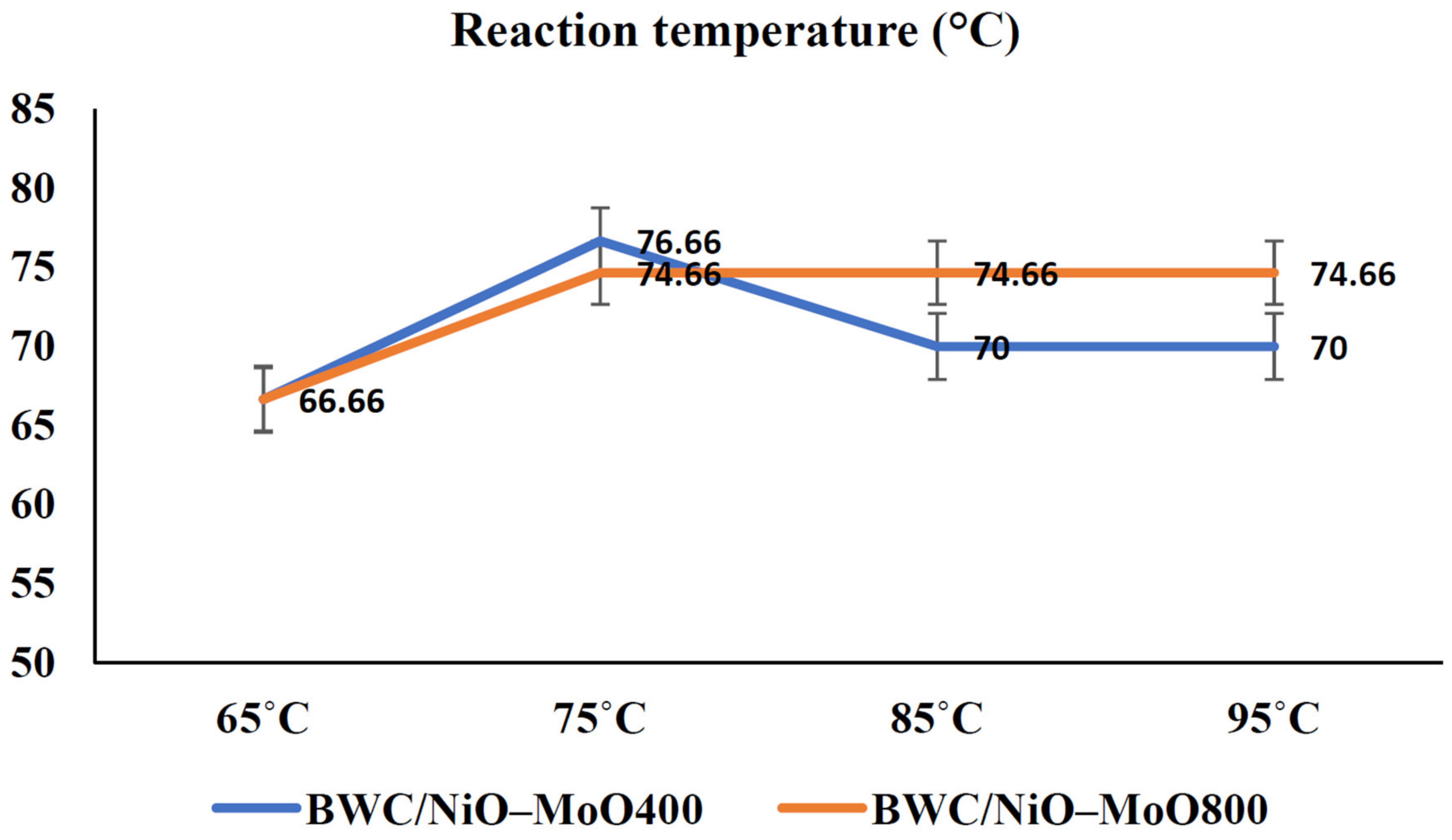
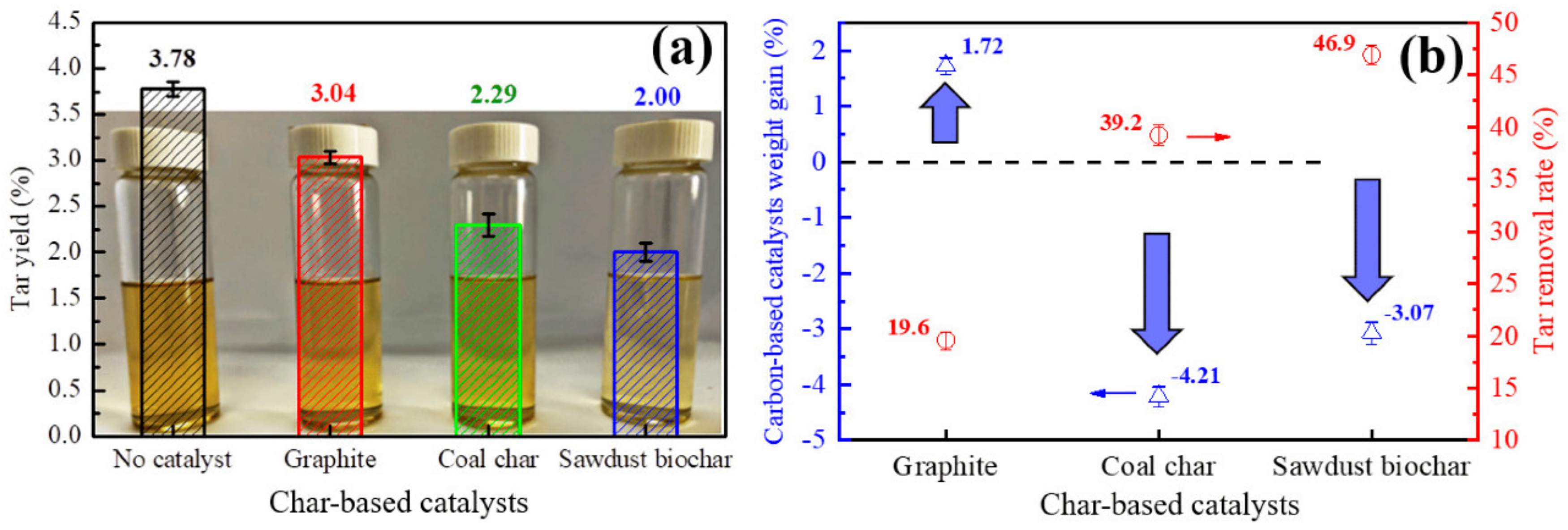
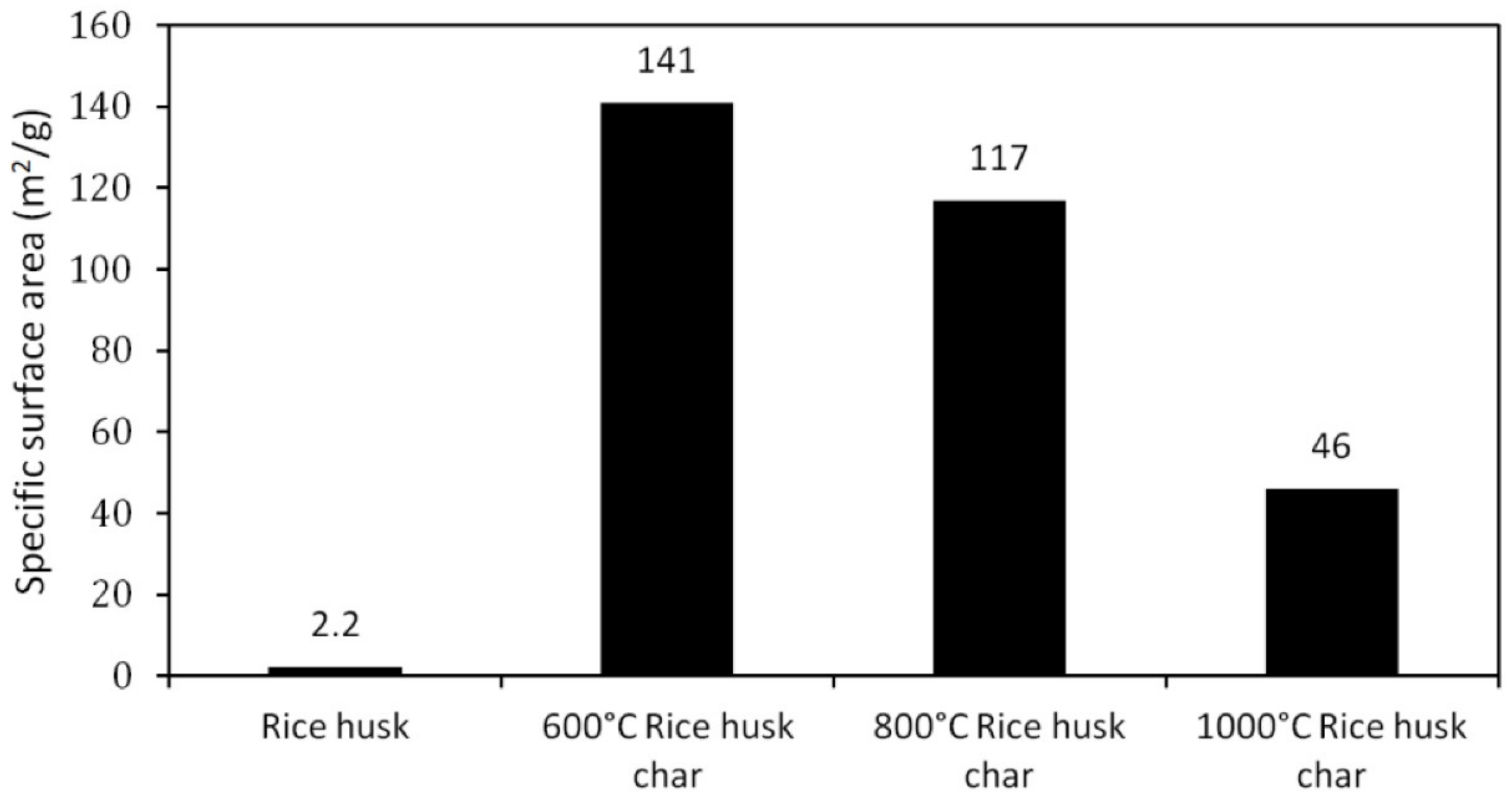
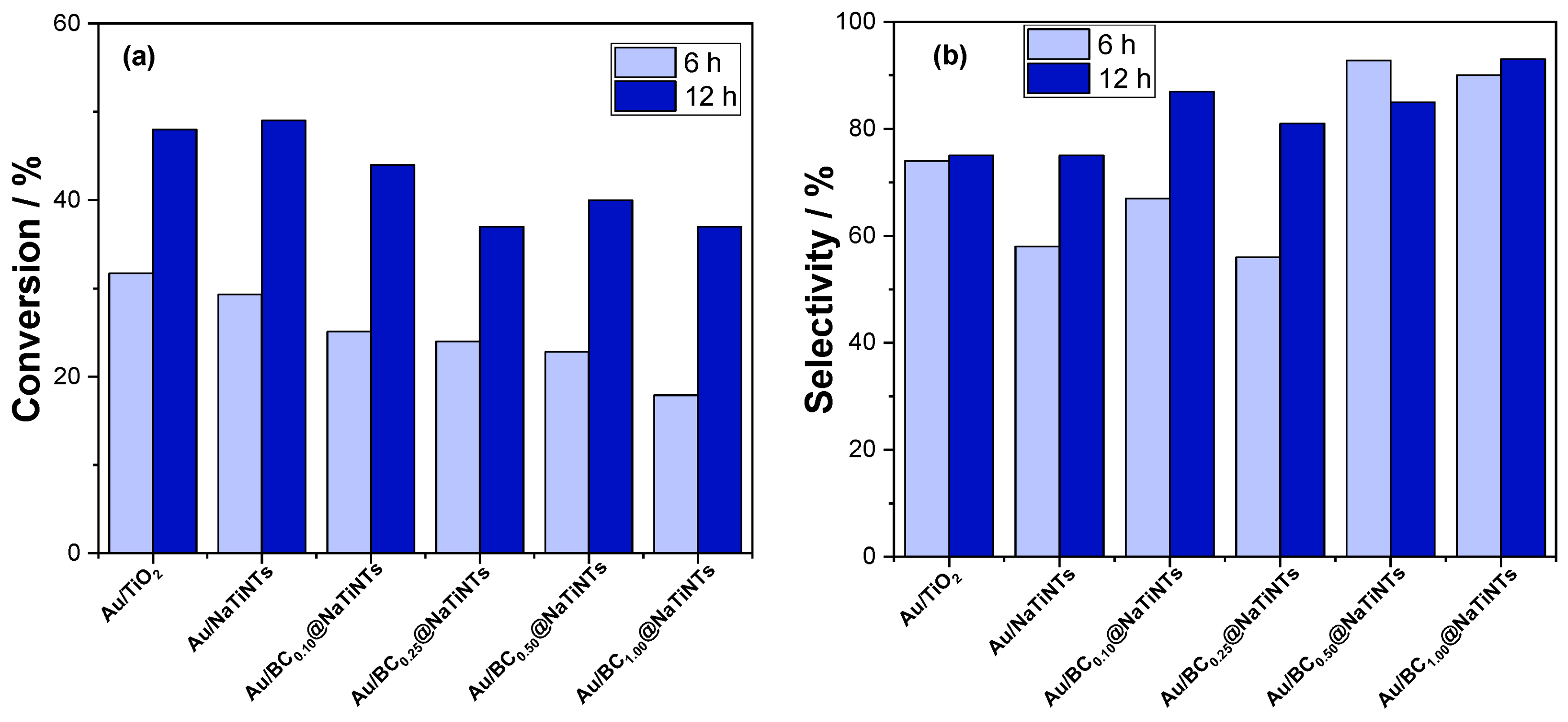
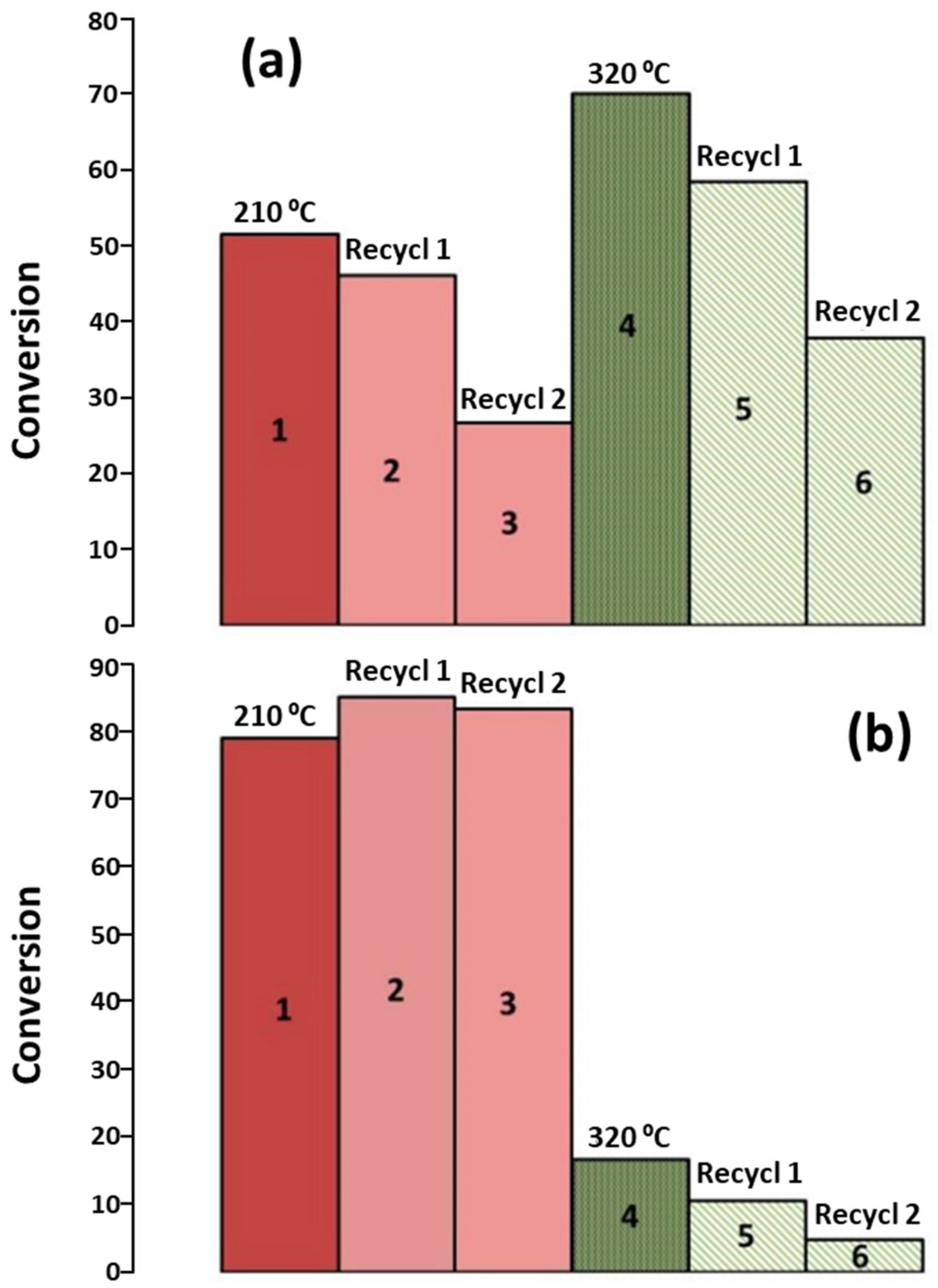
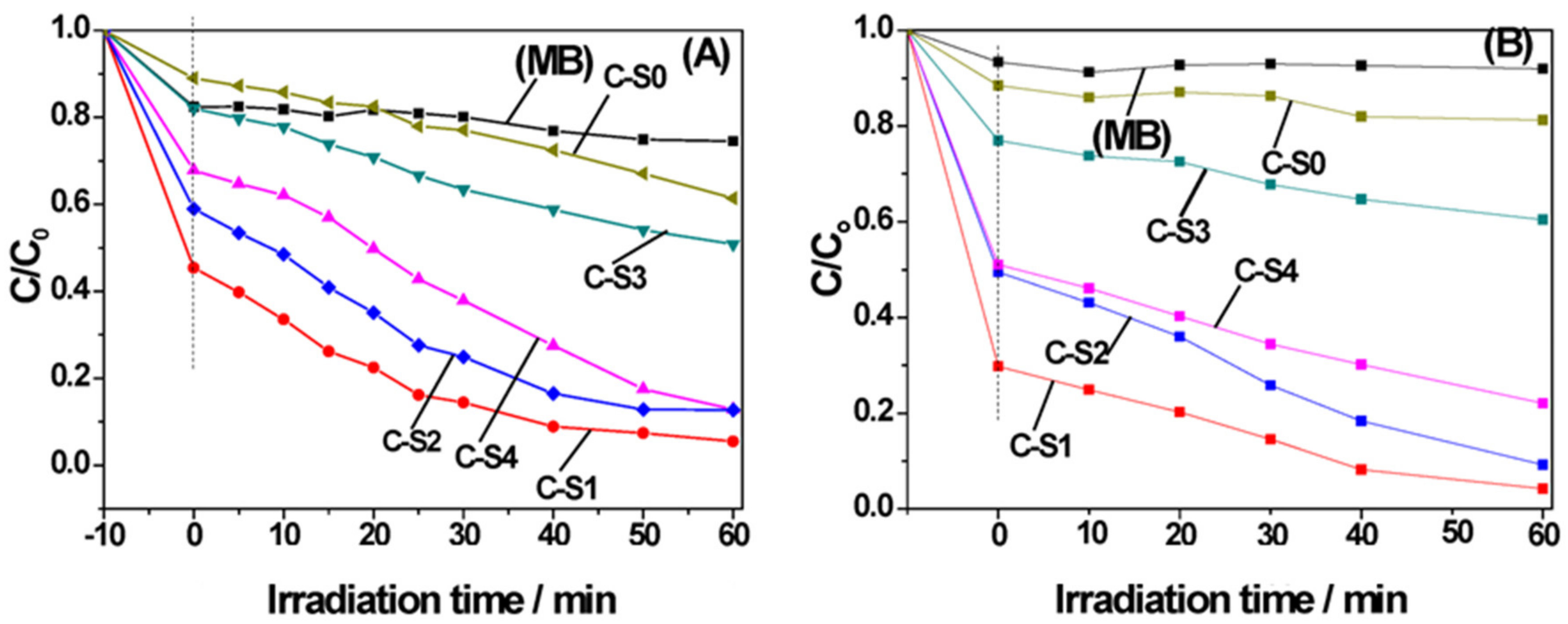
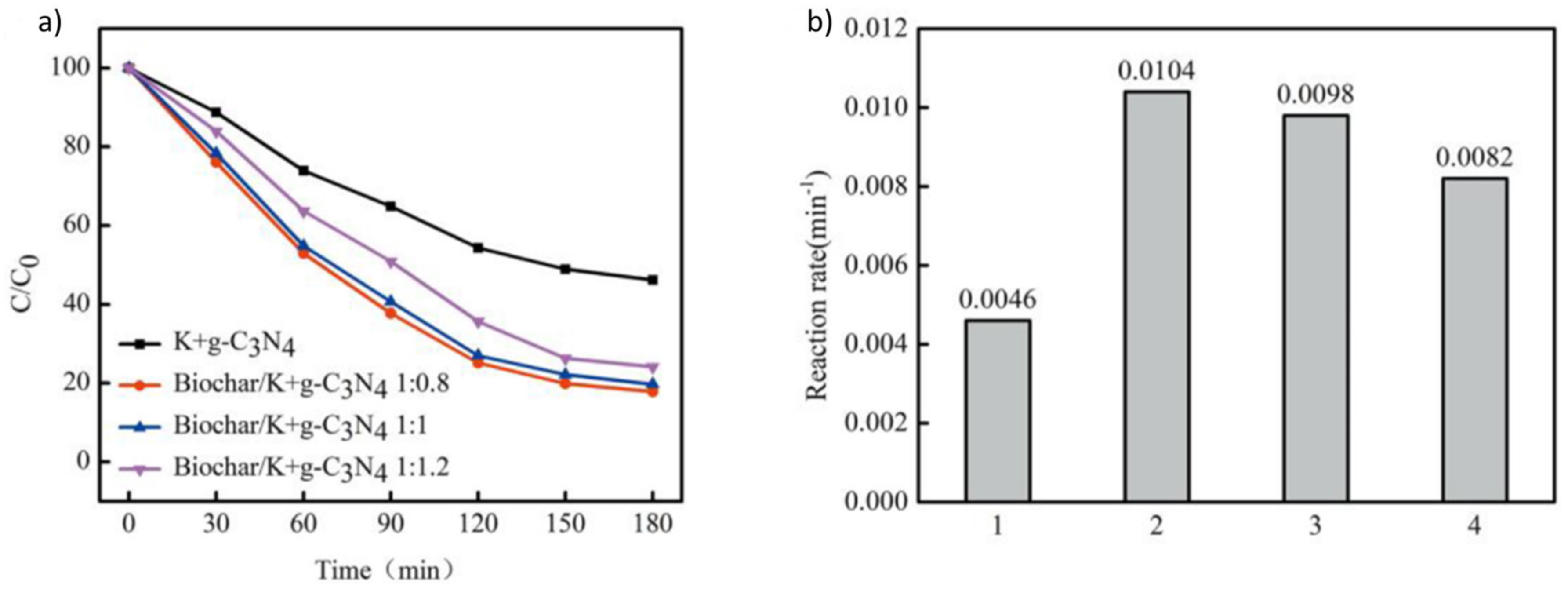

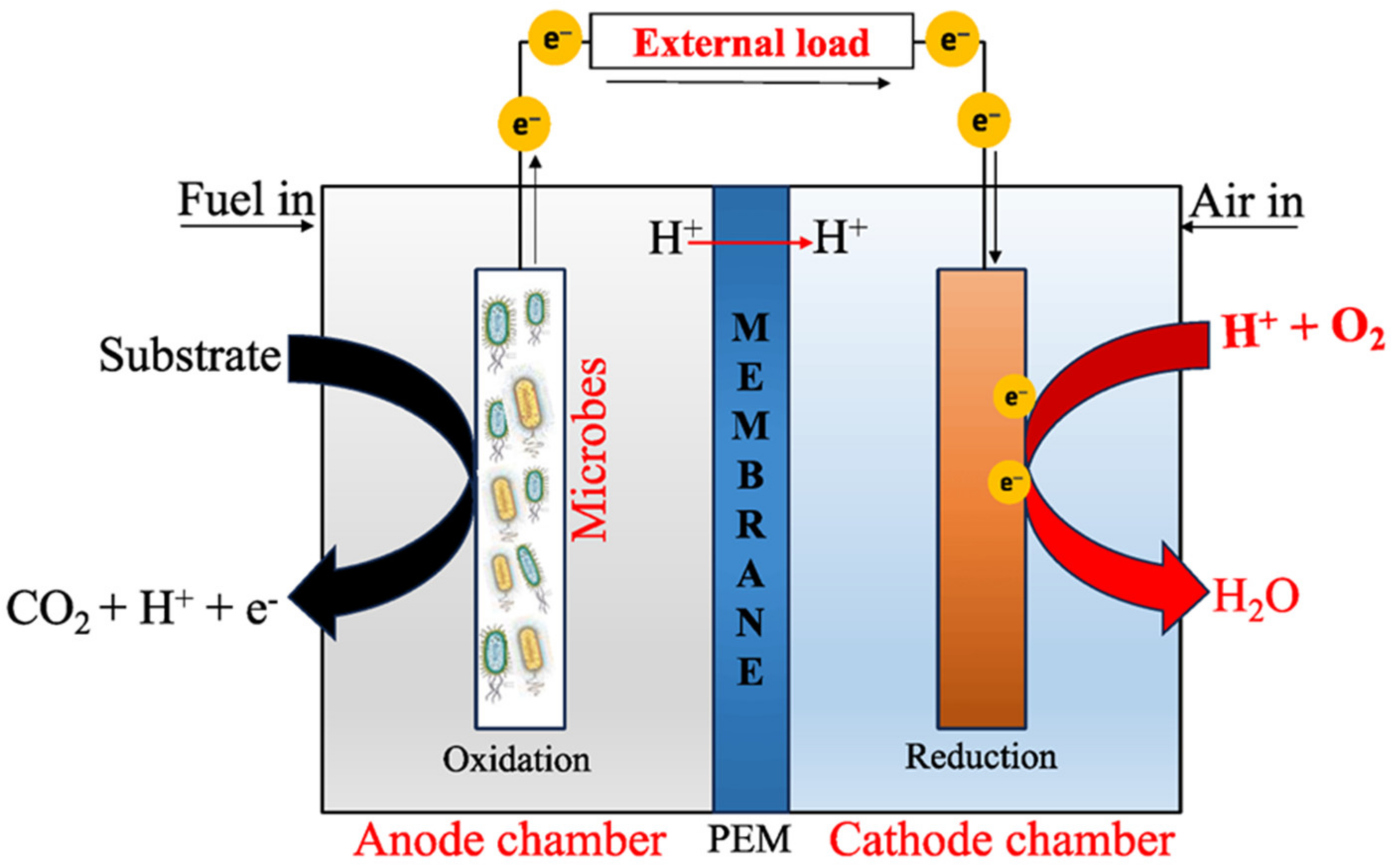
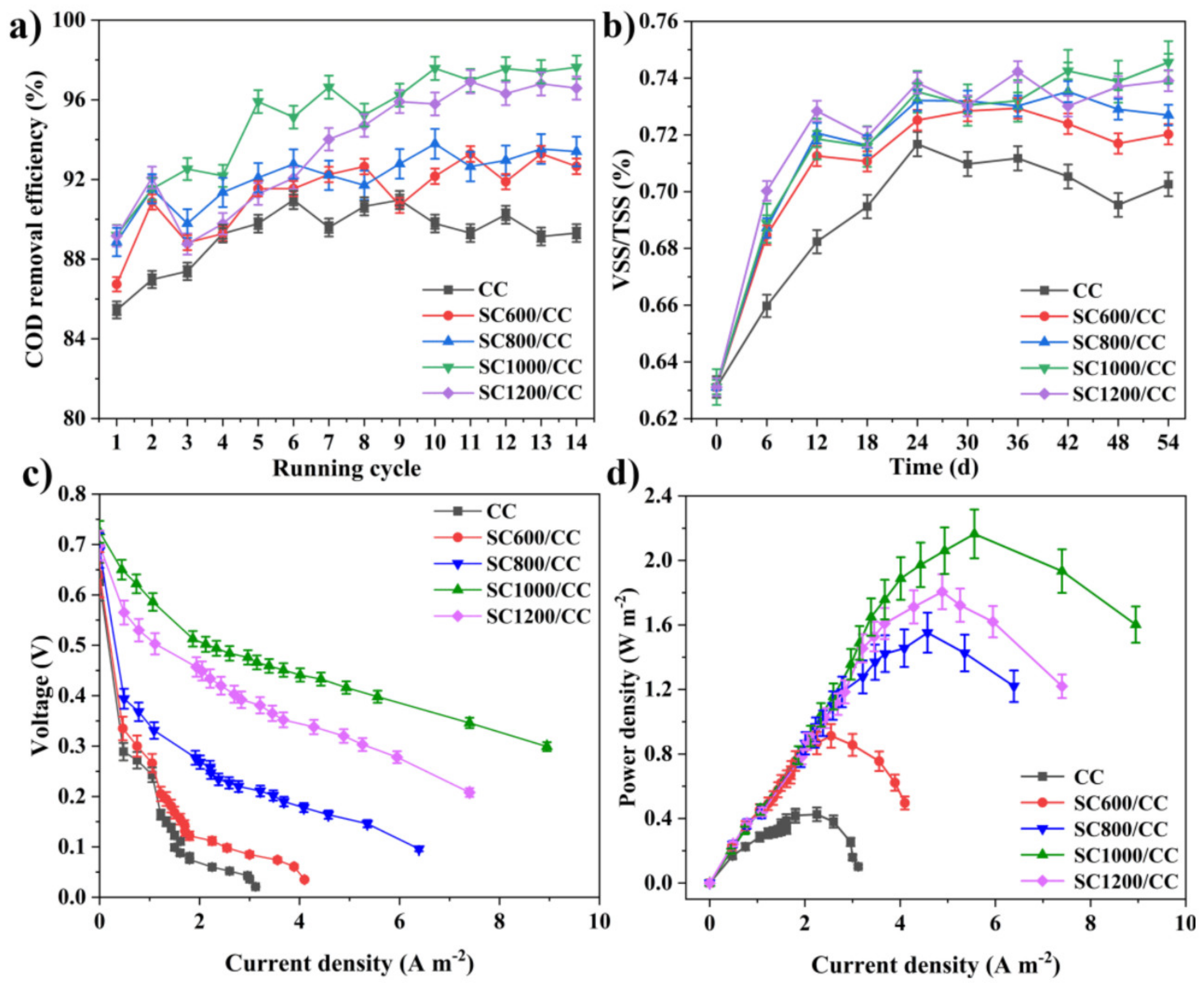
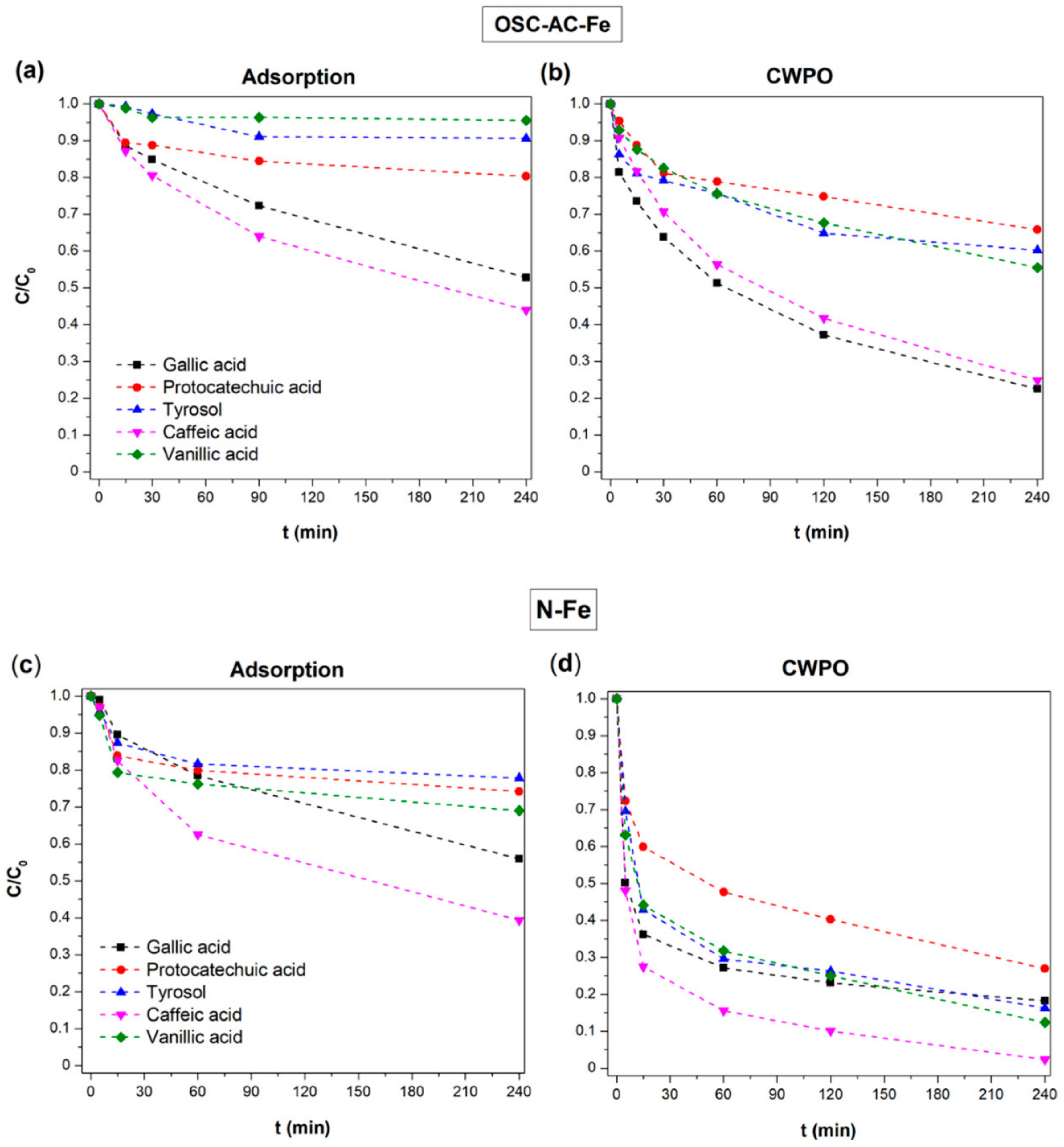
| Biomass/Waste | Carbonaceous Material | Treatment | Application | Reference |
|---|---|---|---|---|
| Coconut coir dust | Highly curved graphite structures | HTC + Pyrolysis | Various | [45] |
| Cinnamomum camphora leaves | Graphene | Pyrolysis | Various | [46] |
| Perilla frutescens leaves | O/N-co-doped porous carbon nanosheets | Pyrolysis | Electrode materials for supercapacitors | [47] |
| Watermelon pulp | Carbon-based composite powder (micrometer particles and nanosheets) | HTC | Anode materials of lithium-ion batteries | [48] |
| Cellulose | Graphitic carbon nanostructures | HTC + Impregnation | Fuel cell catalytic supports/anodes in Li-ion batteries. | [49] |
| Brassica juncea L. plants | Carbon nanotubes | Extraction + thermal treatment | Photocatalysts | [50] |
| Sawdust | Nanofibers/mesoporous carbon composites | Catalytic pyrolysis | Electrode materials for electrochemical energy storage | [51] |
| Spruce bark | Graphene nanosheet arrays | HTC + KOH activation | Electrode material for supercapacitors | [52] |
| Rice husk | Graphene-like materials | Thermal treatment + KOH activation | Graphene materials to improve cement mortar strength | [53] |
| Sphagnum moss, corn stalks, cotton, and prickly bamboo | Carbon nanotubes | Pyrolysis + mechanochemical activation | Hydrogen storage | [54] |
| Cotton | Multilayer carbon nanotubes | Pyrolysis + mechanochemical activation | Adsorbent | [55] |
| Sugarcane bagasse | Graphene-like nanosheets | Carbonization + KOH activation | Supercapacitors | [56] |
| Rice straw | Carbon nanotubes | Chemical pretreatment + HTC | Catalyst supports | [57] |
| Softwood sawdust | Graphitic nanotubes | Chemical pretreatment + pyrolysis | Electrode or filtration applications | [58] |
| Sugarcane bagasse | Nanostructured biochar | Microwave-assisted pyrolysis | Various | [59] |
| Wheat straw | Graphene sheets | HTC + graphitization | Anode material for lithium-ion batteries | [60] |
| Coconut shell | Porous graphene-like nanosheets | Chemical activation + pyrolysis | Supercapacitor | [61] |
| Almond shell | Biochar | Pyrolysis | Electrode in microbial electrolysis cell | [62] |
| Peanut dregs | Porous carbon material | Pyrolysis + chemical activation | Multiple energy storage applications | [63] |
| Sugar cane | Graphene-like material | Pyrolysis + chemical activation | Adsorbent | [64] |
| Lignin | Layered graphene-like structure | Chemical solution combustion | Adsorbent | [65] |
| Reaction | Catalyst | Conditions | Catalytic Efficiency | Ref. |
|---|---|---|---|---|
| Biodiesel Synthesis | NiO-MoO/biochar | 75 °C, 60 min | 77% yield | [71] |
| Biodiesel Synthesis | CaO/biochar | 100 °C, 180 min | 91% yield | [72] |
| Biodiesel Synthesis | CaO-SiO2/biochar | 65 °C, 150 min | 94% yield | [73] |
| Biodiesel Synthesis | Biochar | 60 °C, 120 min | 98% yield | [74] |
| Biodiesel Synthesis | Sulfonated biochar | 80 °C, 40 min | 100% yield | [75] |
| Biodiesel Synthesis | Sulfonated biochar | 65 °C, 60 min | 82% yield | [67] |
| Biodiesel Synthesis | Sulfonated biochar | 65 °C, 360 min | 99% yield | [76] |
| FTS | Co/biochar | 500 °C, 2 MPa | 67% conversion | [79] |
| FTS | N-doped biochar | 300 °C, 2 MPa | 92% conversion | [80] |
| FTS | Fe/biochar | 300 °C, 2 MPa | 46.7% conversion | [81] |
| DRM | Biochar | 900 W (MW) | 75% CH4 conversion | [84] |
| DRM | Biochar | 900 °C | 65% CH4 conversion | [85] |
| AOP | Catalyst | Pollutant | Removal Efficiency | Ref. |
|---|---|---|---|---|
| Ozonation | MnOx/biochar | Trizine | 34% | [181] |
| FeOx/biochar | 35% | |||
| Ozonation | Biochar | Refineries residues | 80% | [182] |
| Ozonation | Biochar | Atrazine | 74% | [183] |
| Ozonation | MnOx/biochar | Toluene | 90% | [184] |
| Fenton process | Fe/biochar | Olive mill wastewater | 92% | [186] |
| Fenton process | Fe3O4/biochar | Pyrene | 100% | [187] |
| PDS activation | Biochar | Clofibric acid | 98% | [189] |
| PMS activation | Biochar | Bisphenol A | 100% | [190] |
| PDS activation | Fe/biochar | Orange 7 | 100% | [191] |
Disclaimer/Publisher’s Note: The statements, opinions and data contained in all publications are solely those of the individual author(s) and contributor(s) and not of MDPI and/or the editor(s). MDPI and/or the editor(s) disclaim responsibility for any injury to people or property resulting from any ideas, methods, instructions or products referred to in the content. |
© 2024 by the authors. Licensee MDPI, Basel, Switzerland. This article is an open access article distributed under the terms and conditions of the Creative Commons Attribution (CC BY) license (https://creativecommons.org/licenses/by/4.0/).
Share and Cite
Villora-Picó, J.J.; González-Arias, J.; Baena-Moreno, F.M.; Reina, T.R. Renewable Carbonaceous Materials from Biomass in Catalytic Processes: A Review. Materials 2024, 17, 565. https://doi.org/10.3390/ma17030565
Villora-Picó JJ, González-Arias J, Baena-Moreno FM, Reina TR. Renewable Carbonaceous Materials from Biomass in Catalytic Processes: A Review. Materials. 2024; 17(3):565. https://doi.org/10.3390/ma17030565
Chicago/Turabian StyleVillora-Picó, Juan J., Judith González-Arias, Francisco M. Baena-Moreno, and Tomás R. Reina. 2024. "Renewable Carbonaceous Materials from Biomass in Catalytic Processes: A Review" Materials 17, no. 3: 565. https://doi.org/10.3390/ma17030565
APA StyleVillora-Picó, J. J., González-Arias, J., Baena-Moreno, F. M., & Reina, T. R. (2024). Renewable Carbonaceous Materials from Biomass in Catalytic Processes: A Review. Materials, 17(3), 565. https://doi.org/10.3390/ma17030565






